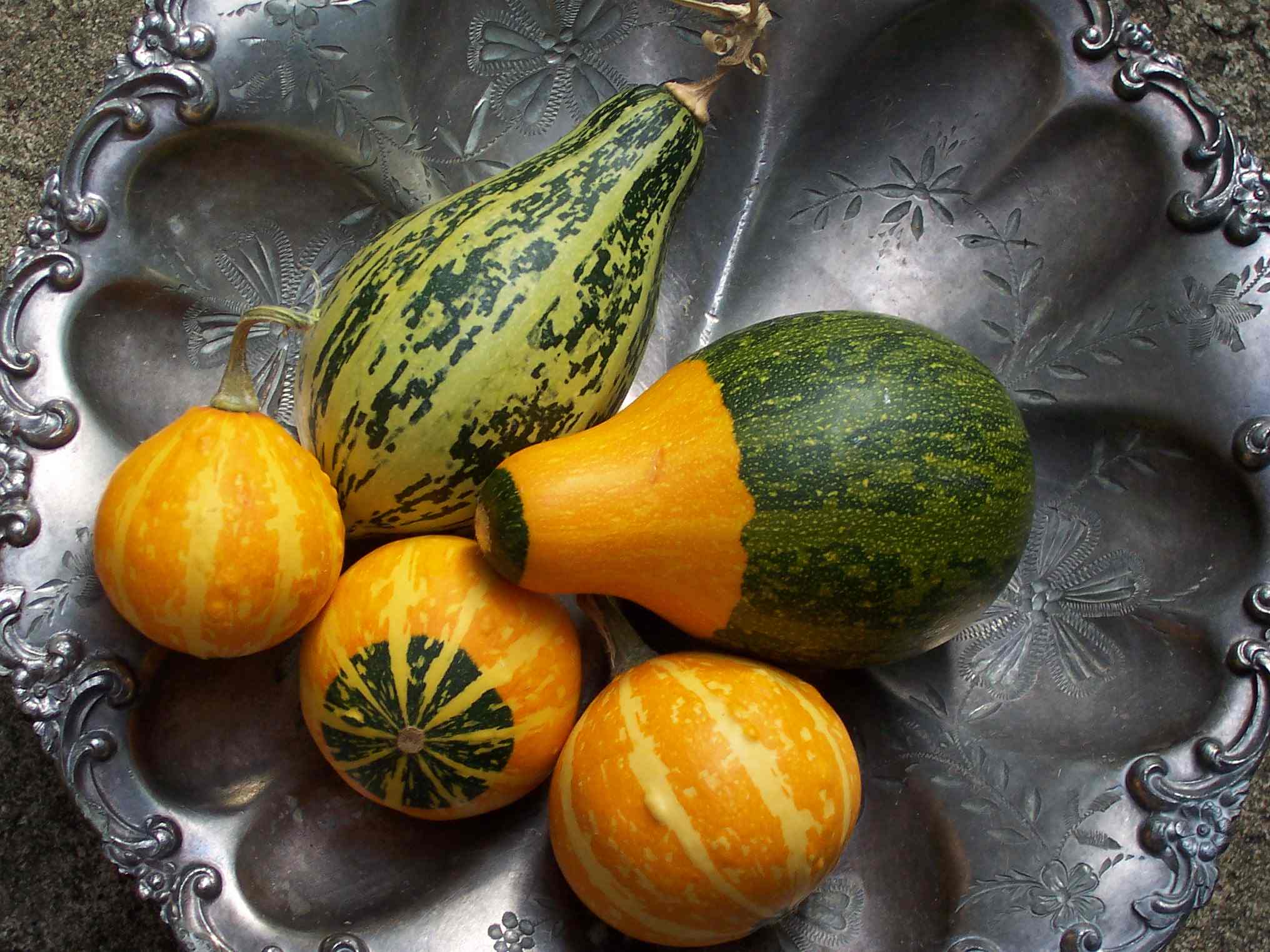Let the gourd times roll

COLUMBIA, Mo. — Fall is the time to harvest, cure and store ornamental gourds, said University of Missouri Extension horticulturist David Trinklein.
“Gourds are thought to be among the first domesticated plant species, dating back to as early as 13,000 B.C,” Trinklein said in a press release. “Through the years, dried gourds served many purposes – as ladles, birdhouses and luffa fibers used in diverse items such as oil filters, life preservers, scrubbing sponges, hats and upholstery.”
Gourds are members of the cucurbit plant family, which includes squash, melons, cucumbers and pumpkins. Decorative gourds in the genus Cucurbita are small and often colorful. Lagenaria gourds are large, hard-shelled and used for ladles, spoons, containers, etc.
Trinklein recommends harvesting Cucurbita gourds as soon as the rinds mature and harden. Harvest by cutting from the main vine, allowing a small portion of the stem to remain attached. Cure for several weeks in a warm, dry location with good air circulation.
After curing, dip or coat them with a household disinfectant to prevent diseases. A light coat of wax provides further disease protection and gives them an attractive sheen, said Trinklein.
Leave Lagenaria gourds on the vines until vines die or freeze in late fall. Freezing does not harm mature gourds, but it causes immature ones to collapse. After harvest, store hard-shelled gourds in a warm, dry area to cure. For most types, the curing process is about four months. Gourds are cured when the seeds inside rattle when shaken. They can then be sanded, sawed, painted or polished.
“For adventuresome gardeners, saving seeds from gourds can be interesting,” Trinklein said. Cucurbits freely cross-pollinate, so saved seeds will likely produce fruit of different shapes, sizes and colors. “More likely than not, very few of the offspring will resemble the fruit from which the seed was saved.”
Gourd trivia
- In the early 1800s, gourds were used as currency for a time in Haiti. Even today, Haiti’s basic unit of currency is called the gourde.
- The papery, winged seed of the climbing gourd has a wingspan five inches. It reportedly inspired the design of early aircraft and gliders.
- According to Guinness World Records, the world’s longest gourd grew in China in 2008. It measured an astonishing 14 feet, 11 inches.
- East Africans often give gourds with picture stories carved on them as wedding gifts.
- Ricky Ricardo’s bongo drum in the television sitcom “I Love Lucy” was made from a zucca gourd. The zucca gourd frequently grows to 50 pounds or more.
Miss Clipping Out Stories to Save for Later?
Click the Purchase Story button below to order a print of this story. We will print it for you on matte photo paper to keep forever.

